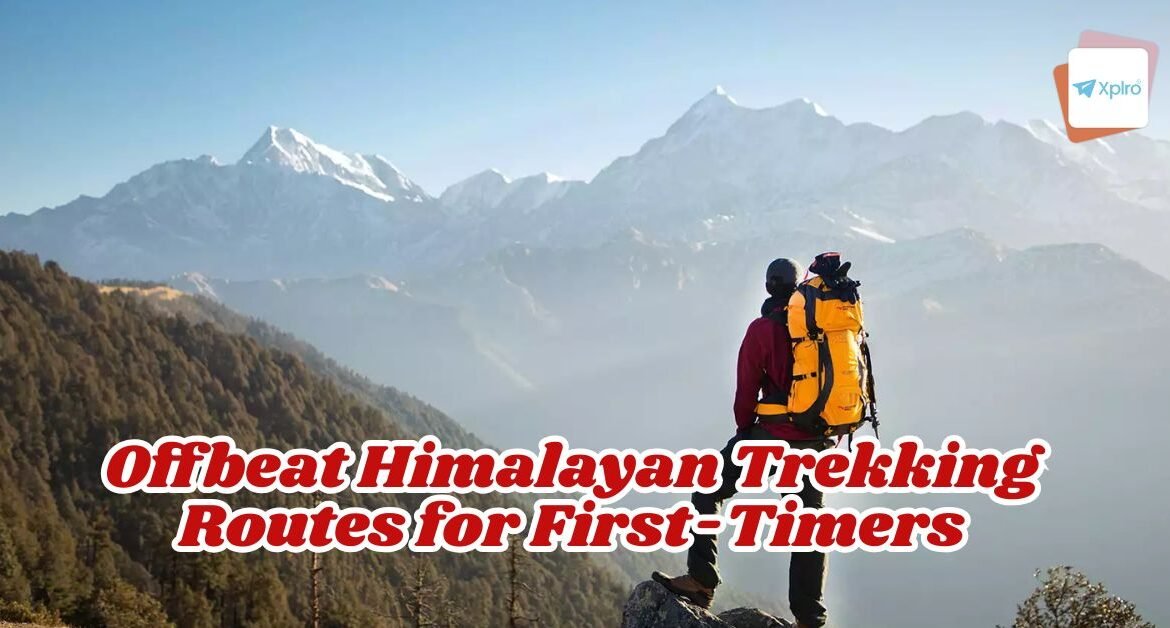Dreaming of your first Himalayan trek but don’t want the crowded trails? Explore offbeat Himalayan trekking routes for first-timers that combine safety, natural beauty, and an authentic mountain experience. These beginner-friendly treks offer gentle trails, moderate altitudes, and local cultural encounters—perfect for those stepping into trekking for the first time. From serene valleys to hidden meadows, these lesser-known routes provide breathtaking views without the tourist rush.
With professional guides, budget packages, and essential tips, first-time trekkers can confidently begin their adventure. Whether you’re a student, solo traveler, or group of friends, these trails promise memorable experiences and smooth acclimatization. Start your Himalayan journey with confidence by choosing treks designed to balance adventure and comfort, ensuring your first trekking story is both safe and unforgettable.
Why Choose Offbeat Treks as a Beginner?
Before diving into the routes, let’s understand why offbeat treks are ideal for first-timers:
- Less crowded: You won’t be jostling for space or photo ops.
- Authentic local experiences: Stay in homestays, eat regional food, and interact with mountain communities.
- Gentle acclimatization: These treks are designed to ease you into high-altitude trekking.
- Budget-friendly: Fewer logistics, simpler gear, and local support make them affordable.
Top Offbeat Himalayan Treks for First-Time Trekkers
Here’s a curated list of beginner-friendly treks that are scenic, culturally rich, and relatively easy to navigate.
| Trek Name | Region | Duration | Max Altitude | Highlights | Best Season |
|---|---|---|---|---|---|
| Chandrakhani Pass | Himachal Pradesh | 3–4 days | ~12,000 ft | Forests, meadows, views of Pir Panjal Range | May–Oct |
| Bhrigu Lake Trek | Himachal Pradesh | 3–4 days | ~14,000 ft | Alpine lake, mythology, grasslands | May–Sep |
| Valley of Flowers | Uttarakhand | 4–5 days | ~12,000 ft | Blooming meadows, UNESCO site, easy trail | July–Sep |
| Sandakphu Trek | West Bengal | 5–6 days | ~11,930 ft | Views of Everest & Kanchenjunga, tea villages | Oct–Apr |
| Har Ki Dun Trek | Uttarakhand | 6–7 days | ~11,700 ft | Ancient villages, riverside camping | Mar–Jun, Sep–Nov |
| Hampta Pass Trek | Himachal Pradesh | 4–5 days | ~14,000 ft | Dramatic landscape shift, Spiti Valley views | Jun–Sep |
Detailed Trek Profiles
1. Chandrakhani Pass Trek – Kullu’s Hidden Gem
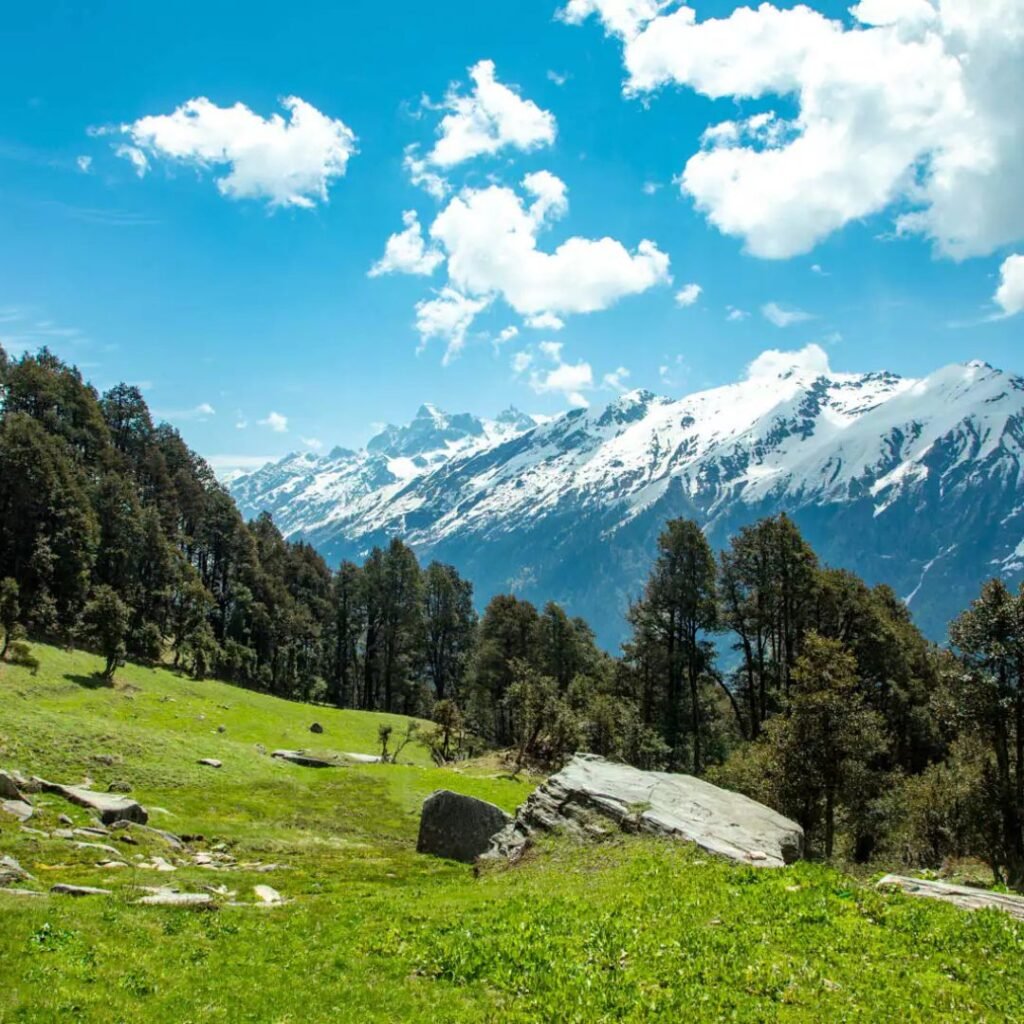
- Region: Himachal Pradesh
- Starting Point: Rumsu Village
- Difficulty: Easy to Moderate
- Why It’s Great for Beginners:
- Well-marked trails
- Cultural immersion in Naggar and Rumsu
- Stunning views of Dhauladhar and Pir Panjal ranges
This trek is a gentle introduction to Himalayan trekking. You’ll pass through deodar forests, alpine meadows, and quaint villages. The sunset views from the pass are unforgettable.
2. Bhrigu Lake Trek – Myth Meets Majesty
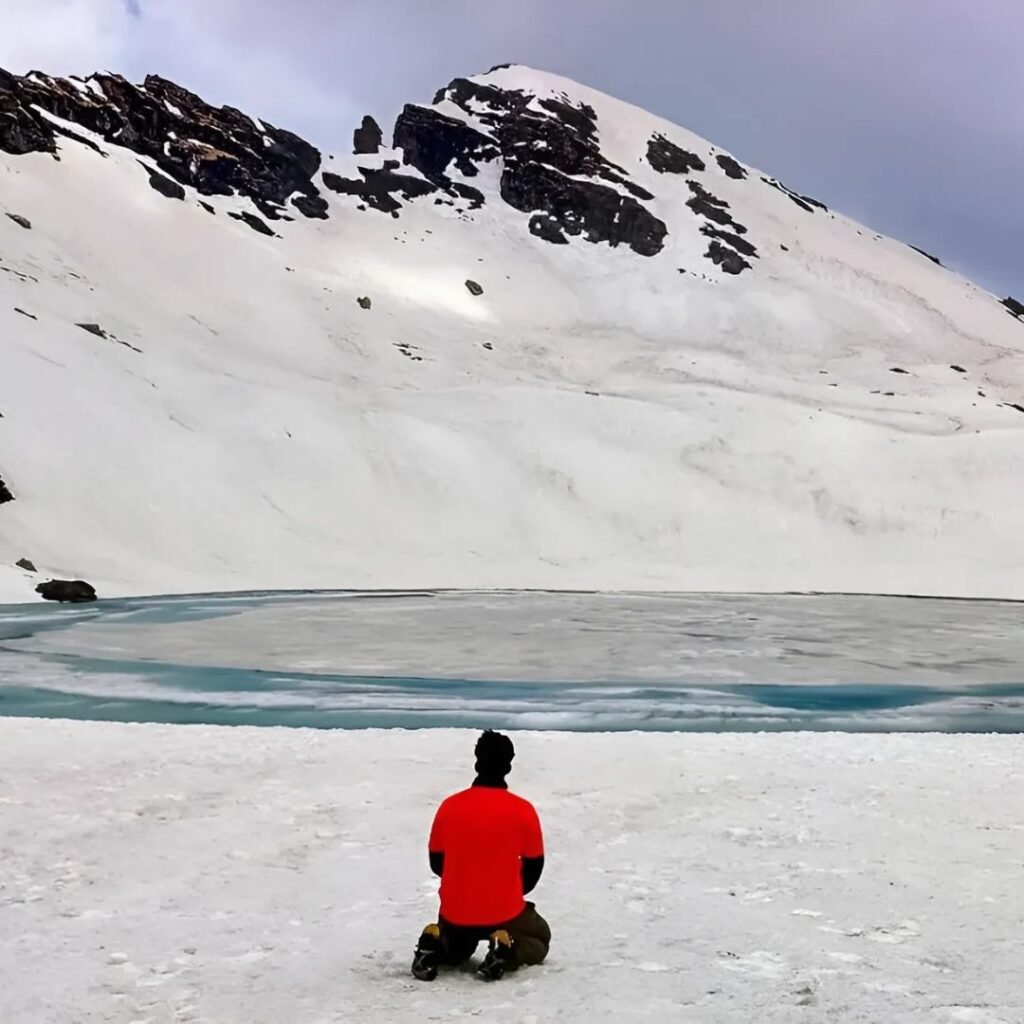
- Region: Himachal Pradesh
- Starting Point: Gulaba (near Manali)
- Difficulty: Moderate
- Why It’s Great for Beginners:
- Quick access to high-altitude meadows
- Mythological significance
- No technical gear required
The lake is believed to be sacred, and the trail offers panoramic views of snow-capped peaks. It’s a short trek but packs a visual punch.
3. Valley of Flowers – Nature’s Canvas
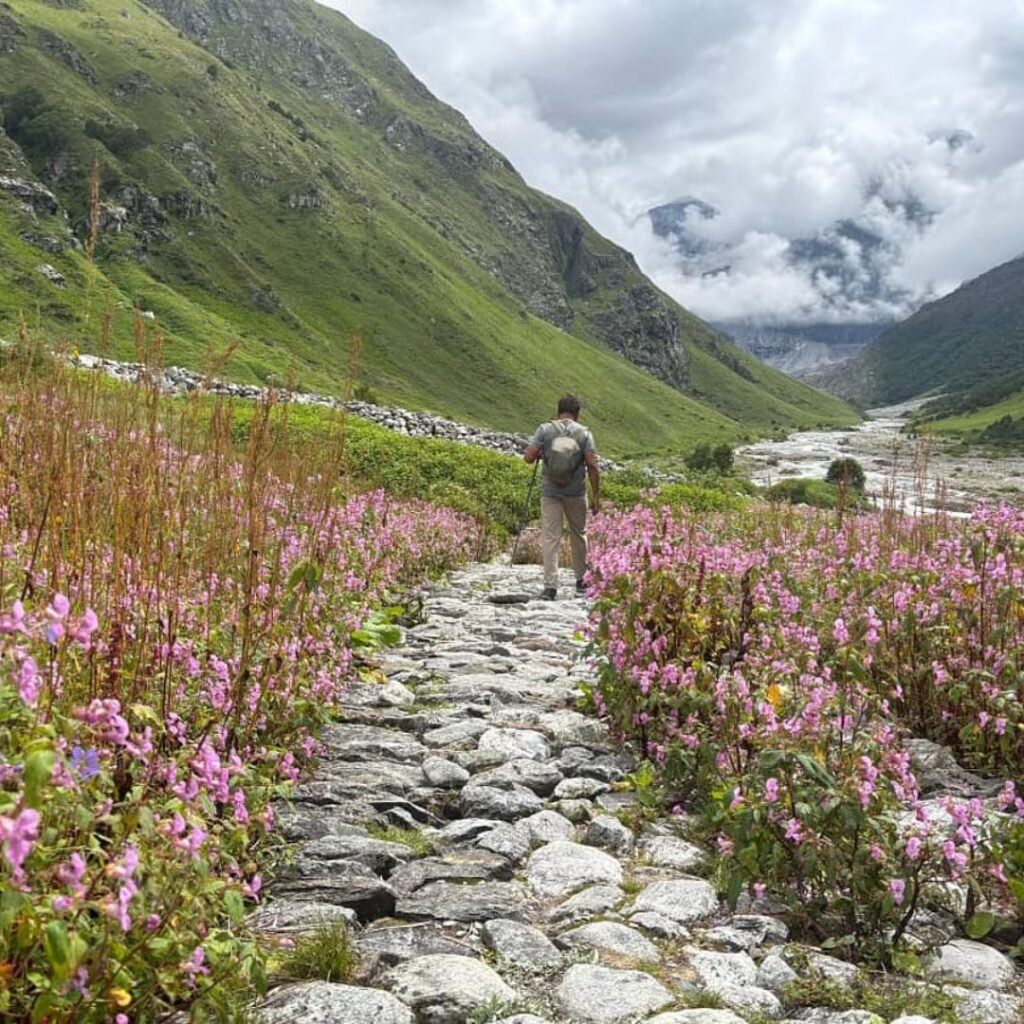
- Region: Uttarakhand
- Starting Point: Govindghat
- Difficulty: Easy
- Why It’s Great for Beginners:
- UNESCO World Heritage Site
- Lodges and food available en route
- No camping required
This trek is ideal for those who want a floral fantasy without the physical strain. The valley bursts into color during monsoon, making it a surreal experience.
4. Sandakphu Trek – The Balcony of the Himalayas
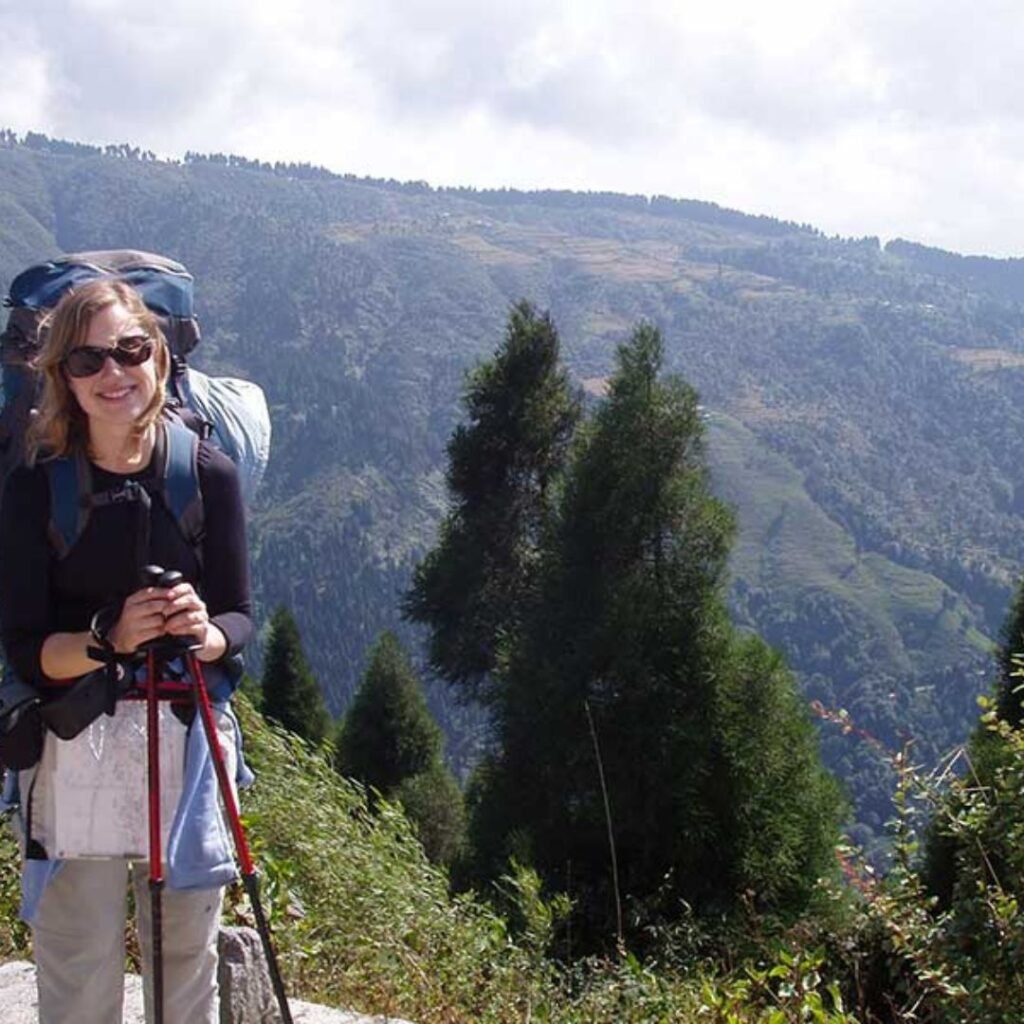
- Region: West Bengal
- Starting Point: Manebhanjan
- Difficulty: Moderate
- Why It’s Great for Beginners:
- Views of four of the five highest peaks in the world
- Tea house stays
- Cultural blend of Nepalese and Bengali traditions
This trek offers a unique blend of culture and scenery. You’ll walk along the Indo-Nepal border and witness sunrise over Everest and Kanchenjunga.
5. Har Ki Dun – The Valley of Gods
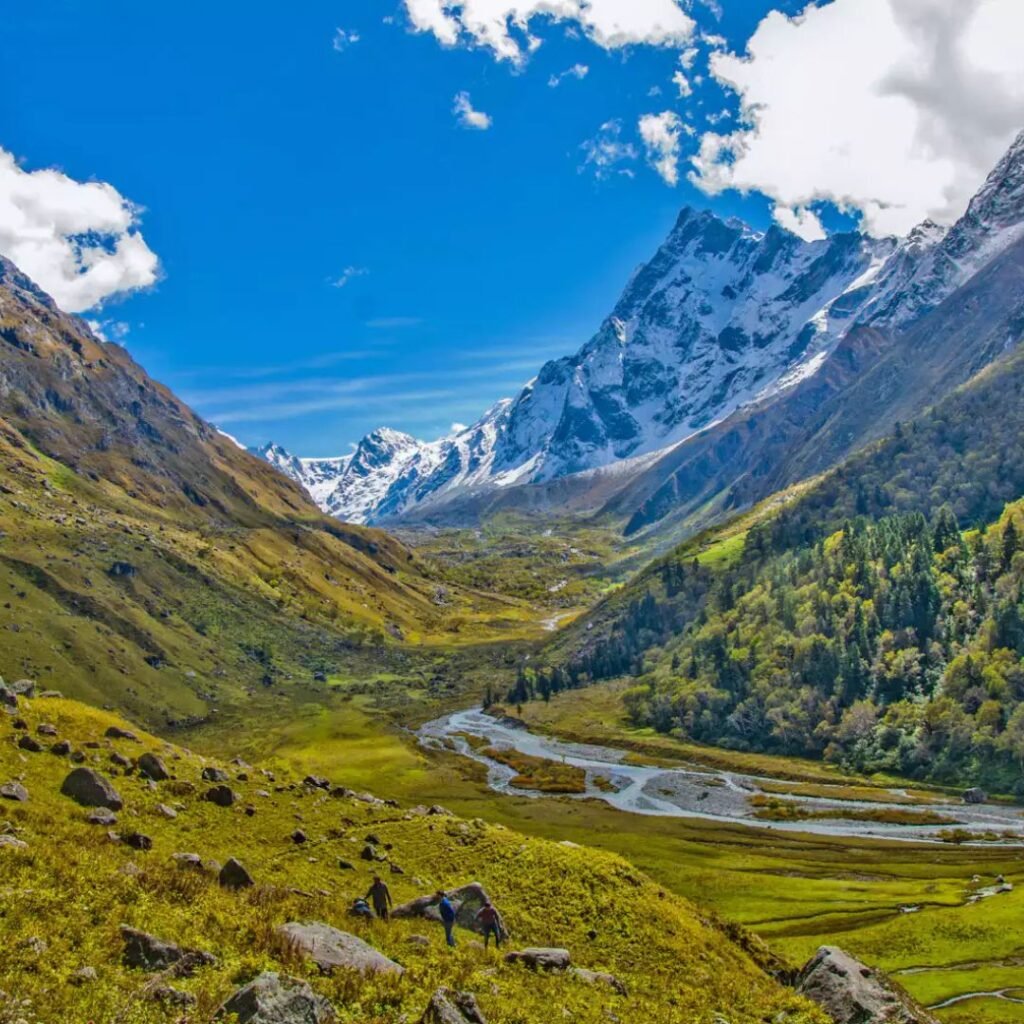
- Region: Uttarakhand
- Starting Point: Sankri
- Difficulty: Moderate
- Why It’s Great for Beginners:
- Mythological roots
- Lush forests and riverside camps
- Ancient villages untouched by time
Har Ki Dun is a trek through history and nature. It’s perfect for those who want to combine trekking with storytelling and cultural immersion.
6. Hampta Pass – Offbeat Himalayan Trekking Routes for First-Timers
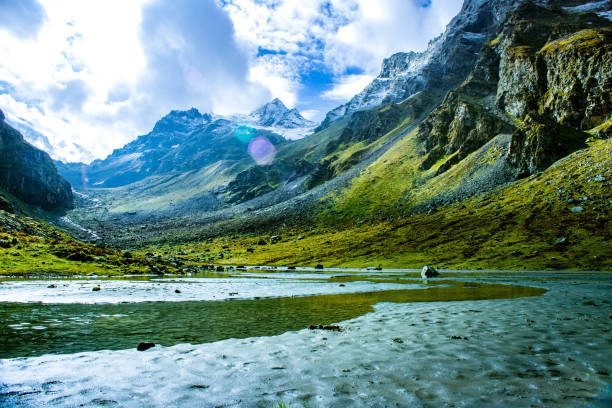
- Region: Himachal Pradesh
- Starting Point: Jobra (near Manali)
- Difficulty: Moderate
- Why It’s Great for Beginners:
- Landscape changes from green valleys to barren Spiti
- Optional visit to Chandratal Lake
- Short duration with high rewards
This trek is a visual rollercoaster. You’ll experience two contrasting worlds—lush Kullu and stark Spiti—in just a few days.
What to Pack for Your First Himalayan Trek
Here’s a quick checklist to keep your gear light but effective:
- Trekking shoes with good grip
- Layered clothing (base, insulation, waterproof)
- Sunscreen, sunglasses, and cap
- Reusable water bottle and purification tablets
- Basic first aid kit
- Snacks and energy bars
- Lightweight backpack (30–40L)
- ID proof and permits (if required)
Final Thoughts: Your First Trek Is Just the Beginning
Choosing an offbeat Himalayan trek as your first adventure is more than a travel decision—it’s a mindset shift. You’re opting for authenticity over popularity, depth over distance, and connection over consumption.
These treks won’t just show you the mountains—they’ll introduce you to a slower, more intentional way of exploring the world. And once you’ve tasted that, there’s no going back.
FAQs
1. What are the best offbeat Himalayan treks for beginners?
Some top beginner-friendly offbeat treks include Chandrakhani Pass, Bhrigu Lake, Valley of Flowers, Sandakphu, Har Ki Dun, and Hampta Pass. These offer scenic beauty, manageable altitude, and cultural immersion.
2. Is Himalayan trekking safe for first-time trekkers?
Yes, if you choose beginner-level treks, prepare adequately, and follow safety guidelines. Hiring a certified guide and acclimatizing properly are key to a safe experience.
3. What is the ideal fitness level for beginner Himalayan treks?
Basic cardiovascular fitness and stamina are sufficient. Regular walking, light jogging, or yoga for 3–4 weeks before the trek can help you prepare.
4. Do I need prior trekking experience for these routes?
No prior experience is required for beginner treks like Valley of Flowers or Chandrakhani Pass. These are designed for first-timers with moderate fitness.
5. What is the best time to go on beginner Himalayan treks?
Most beginner treks are best done between May to October, depending on the region. Valley of Flowers is ideal during monsoon (July–September), while Sandakphu is great in winter.
6. How high do beginner treks in the Himalayas go?
Beginner treks typically range between 10,000 to 14,000 feet. These altitudes are manageable with proper acclimatization and hydration.
7. What gear do I need for my first Himalayan trek?
Essentials include trekking shoes, layered clothing, a backpack (30–40L), water bottle, sunscreen, sunglasses, basic medicines, and a rain cover.
8. Can I do a Himalayan trek solo as a beginner?
While solo trekking is possible, beginners are advised to join group treks or hire local guides for safety, navigation, and cultural insights.
9. Are permits required for Himalayan treks?
Yes, some treks like Valley of Flowers and Har Ki Dun require forest permits or entry passes. These can be arranged through local agencies or online portals.
10. What kind of accommodation is available on these treks?
Expect homestays, guesthouses, or tents depending on the route. Treks like Sandakphu offer tea house stays, while Hampta Pass involves camping.
11. How do I acclimatize during a Himalayan trek?
Ascend gradually, stay hydrated, avoid alcohol, and rest well. Most beginner treks are designed with gentle altitude gain to support acclimatization.
12. What should I eat during the trek?
Stick to light, high-energy meals like dal-rice, khichdi, fruits, and energy bars. Avoid heavy or oily food that may cause altitude sickness.
13. Is altitude sickness a concern for beginners?
It can be, but beginner treks usually stay below risky altitudes. Symptoms include headache, nausea, and fatigue. Descend immediately if symptoms worsen.
14. Can children or older adults join beginner Himalayan treks?
Yes, treks like Chandrakhani Pass and Valley of Flowers are suitable for families with children (12+) and older adults with basic fitness.
15. How much does a beginner Himalayan trek cost?
Costs range from ₹5,000 to ₹15,000 depending on duration, location, and services. Group treks are more budget-friendly than private ones.
16. What is the duration of beginner treks in the Himalayas?
Most beginner treks last 3 to 6 days, making them ideal for short vacations or weekend getaways.
17. Do I need travel insurance for trekking?
It’s recommended, especially for treks above 10,000 ft. Insurance should cover medical emergencies, evacuation, and trip cancellations.
18. What are the cultural highlights of offbeat Himalayan treks?
Expect interactions with local communities, traditional architecture, regional cuisines, and folklore. Har Ki Dun and Sandakphu are rich in cultural experiences.
19. Can I combine trekking with sightseeing?
Absolutely. Many treks start near popular destinations like Manali, Rishikesh, or Gangtok. You can explore temples, monasteries, and local markets before or after the trek.
20. How do I choose the right trek for my first Himalayan adventure?
Consider your fitness level, preferred scenery (meadows, lakes, forests), duration, and season. Start with easy-to-moderate treks and gradually level up.




